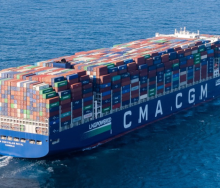Domestic manufacturing got off to a tough start in the third quarter, according to the latest Absa Purchasing Managers’ Index (PMI).
Bureau for Economic Research economists noted in their Weekly Review on Monday that headline PMI fell slightly from 47.6 in June to 47.3 in July.
“While relatively unchanged, the latest print masks substantial changes in some PMI subcomponents. Indeed, there was a considerable decline in the business activity index – down almost 11 index points – as more intense power cuts and delays in receiving inputs due to transport disruptions on the N3 corridor likely weighed on activity,” the BER economists said.
“In contrast, the supplier deliveries index more than compensated for the decline in the business activity index, rising by 12 index points. However, this increase was likely due to supply chain disruptions rather than increased demand.”
However, on a positive note, the BER noted that the PMI price index also fell in July, “hinting at a continued slowdown in the annual growth rate of the producer price index (PPI)”.
Beyond the manufacturing sector, business conditions in SA did not fare any better, with the S&P Global PMI hitting a two-year low of 48.2 in July compared to 48.7 in June. However, inflationary pressures remained elevated, with businesses raising their selling prices to pass on costs to customers.
South Africa’s external trade balance also reflected disappointing news.
“After an unexpected trade surplus in May, trade data from the South African Revenue Service (Sars) surprised on the downside in June. Against expectations for a surplus of R5 billion, SA recorded a trade deficit of R3.5bn in June,” the economists noted.
The shortfall was due to a slump in the value of exports, down 8.6% month-on-month (m-o-m), driven by a decline in shipments of vehicles, precious metals, mineral products, and base metals. Imports fell by 1.6% m-o-m, led by a drop in purchases of precious metals and stones and prepared foodstuffs.
“Besides logistical bottlenecks likely hampering exports, reports during the month suggested some delays in customs processing. Assuming that the latter was swiftly resolved, the trade figures may look better again in July. This is especially the case amid a strong performance from vehicle exports in July,” the economists said.
According to data from the National Association of Automobile Manufacturers of SA, total vehicle sales increased to 43 389 units in July, a modest increase of 1.3% year-on-year (y-o-y).
“Although new passenger car sales slumped in July (down 9.7% y-o-y), there was a surge in new light commercial vehicle sales (up 32.6% y-o-y).
“Export sales also boomed, surging 47.3% y-o-y to reach 37 064 units in July, the highest level since September 2022. While this annual increase is due to the low base effect of the production and export disruptions caused by the devastating floods in Durban last year, export sales still grew by more than 35% m-o-m in July,” the economists noted.
However, on the downside, according to Statistics South Africa, electricity generation fell by 3.7% y-o-y in June, continuing a series of declines that began in September 2021. But in line with the less intense load-shedding experienced in June, there was a seasonally adjusted rise in the month’s electricity production (up 3.6% m-o-m), following a decline of 0.8% m-o-m in May.













